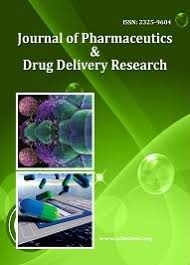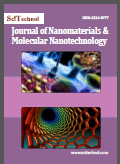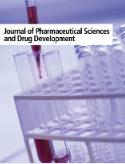Theme: Emerging Innovations Era in Nanoscience & Nanotechnology
Nanoscience 2021
We are delighted to welcome you to 7th Annual Meet on Nanoscience and Nanotechnology which is going to be scheduled during December 06-07, 2021 webinar which assimilate keynote presentation, Young analysis Forum, Oral talks, E-Poster presentation, Poster displays and Exhibitions.
Nanoscience 2021 provides opportunity to learn the latest advancements, technologies, Nanotechnology techniques and its applications in multidisciplinary subjects such as, Material science, Nano electronics, Nano biotechnology, Nano robots and Diagnostic devices
Nanoscience 2021 invites all the participants from all over the world to attend 7th Annual Meet on Nanoscience and Nanotechnology during webinar
The main aim of the Conference is to bring together the Professors, Researchers, Scientists and also Lab Scientists to provide an international forum for the dissemination of original research results, new ideas and practical development experiences which concentrate on both theory and practices
Nanoscience 2021 will focus on many interesting scientific sessions and covers all frontier topics in Nanotechnology which include Basic Principles Nanomedicine, Materials Science, Biotechnology, Nano Drug Delivery and many more
Target audience:
- Academic Professionals
- Nano Scientists
- Students carrying out laboratory and field studies
- Nanotechnology Associations and Societies
- Pharmaceutical Companies and Markets
- Noble laureates in Health Care and Medicine
- Nanotechnologists
- Pharmacists
- DNA Professionals
- Nanotechnology Professionals
- Bio instruments Professionals
- Bio-informatics Professionals
- Toxicologists
-
Nonlinear optical microscopy
-
Nano magnetics
-
Nanodevices
-
Nanofabrication
-
Nanospinitronics
-
Biogenic nanoparticles
-
Green nanotechnology
-
Quantum field model for graphene magnetism
-
Nanotubes
-
Nanostructured metals: manufacturing and modelling
-
Applications of nano materials and devices
-
Nanoparticles in medicine
-
Nanoimaging
-
Clinical developments in antimicrobial nano medicine
-
Regenerative nanoedicine
-
Personalized nanomedicine
-
Nanomedicine in theranostics
-
Metal-based nano particles
-
Metallurgy and materials science
-
Materials for energy applications
-
Fundamentals of material science
-
Polymeric materials
-
Bionanomaterials and nanophase materials
-
Meta-materials and catalytic materials
-
Magnetorheological fluid
-
Global materials science market
-
Nanopharmaceuticals
-
Medical nanotechnology in cancer therapy
-
Nanotechnology in cardiovascular medicine
-
Nano-anti-viral drugs
-
Gene therapy
-
Targeted therapy
-
Classes of nanostructured biomaterials
-
Nanoelectronics
-
Nanowires
-
Nanotubes
-
Spectroscopy
-
Plasmonic nanosensors
-
Nanofabrication
-
Nanolithography
-
Nanometrology
-
Nanofluidics
-
Nanosysthesis
-
Fundamental quantum effects
-
Nanophysics applications
-
Energy applications of nanotechnology
-
Industrial applications of nanotechnology
-
Potential applications of carbon nanotubes
-
Nanomaterials manufacturing technologies
-
Mechanical applications in nanotechnology
-
Nanotechnology in water treatment
-
Nanotechnology in warfare
-
Nanomaterial’s in building and construction
-
Nano robotics design and control
-
Industrial robot automation
-
Human-Robot interaction
-
Swarm robotics and medical robotics
-
Nanoids and nanites
-
Nanobots and nanomites
-
Fluorescence energy transfer
-
Biomolecule-mediated nanomaterial synthesis
-
Optoelectronic
-
Nanomaterials manufacturing technologies
-
Biofunctionalization of nanomaterials
-
Biomolecule/nanomaterial interface
-
Cellular/nanomaterial interactions
-
Computational modelling
-
Nanospectra biosciences
-
Nanospectra
-
DNA computation
-
Nanobiosensor
-
Biological nanonetworks
-
Bioluminescent magnetic nanoparticles
-
Surface modified polystyrene nanoparticles
-
Target specific drug delivery
-
Technology transfer in materials science
-
Nano-communications
-
Bio-engineering
-
Wireless technology
-
DNA computation
-
Structural DNA nanotechnology
-
Dynamic DNA nanotechnology
-
Nanotechnology safety, regulations and ethics
-
Risk assessment and management
-
Environmental impact of nanotechnology
-
Regulation of nanotechnology
-
Societal Impact of nanotechnology
-
Molecular assembler
-
Molecular engineering
-
Supramolecular assembly
-
Self-assembled monolayer
-
Molecular scale electronics
-
Molecular communication
Nanoscience 2021 invites attendees, presenters & exhibitors all over the globe to, Webinar. The organizing committee is to construct for more exciting and informative conference program this year also which includes plenar lectures, Presentations, workshops on a variety of subjects, poster presentations, video presentations and many different programs for participants from all over the Globe. We are Glad to invite you all to join & register for the 7th Annual Meet on NanoScience and Nanotechnology. November 08-09, 2021 as a Webinar.
Nanotechnology includes fields of science as diverse as molecular nanotechnology, Nano Computational Modelling, Polymer Nanotechnology, DNA Nanotechnology, Nano Robotics, Assembly and Automation, Nanotechnology in Tissue Engineering, Nanotechnology in Water Treatment, Scope of Nano Materials. The technology finds applications in manufacturing industries such as medicine & healthcare, environment, ICT, energy, Nano-EHS, and others.
Conference Highlights
- Nanoscience
- Nanotechnology
- Nanomedicine
- Materials Science
- Nano Drug Delivery
- Nanodevices and Nanosensors
- Quantum Nanoscience
- Applications of Nanotechnology
- Environmental Nanotechnology
- Nano Robotics, Assembly and Automation
- Advanced Nanomaterials and Nanoparticles
- Computational Nanotechnology
- Bionanoscience and Biotechnology
- Nanotechnology in Communications and Information Technology
- DNA and Polymer Nanotechnology
- Nanotech Safety and Risk factors
- Molecular Nanotechnology
To share your views and research, please click here to register for the Conference.
To Collaborate Scientific Professionals around the World
| Conference Date | December 06-07, 2021 | ||
| Sponsors & Exhibitors |
|
||
| Speaker Opportunity Closed | |||
| Poster Opportunity Closed | Click Here to View | ||
Useful Links
Special Issues
All accepted abstracts will be published in respective Our International Journals.
- Journal of Nanomaterials & Molecular Nanotechnology
- Journal of Pharmaceutical Sciences and Emerging Drugs
- Journal of Pharmaceutical Sciences and Drug Development
Abstracts will be provided with Digital Object Identifier by







